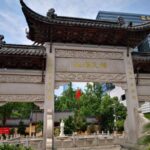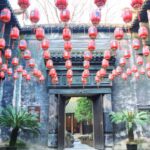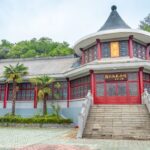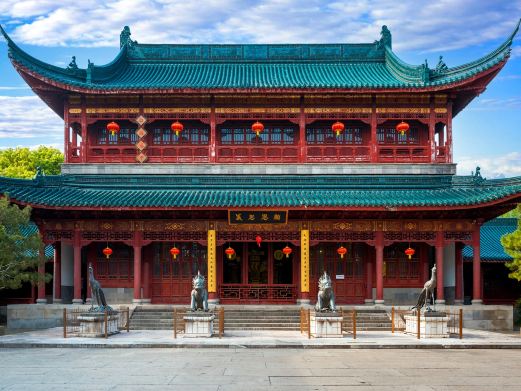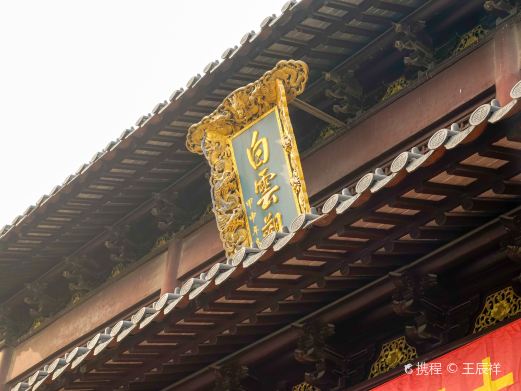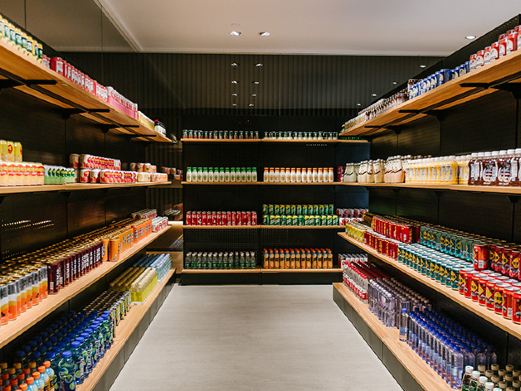Guoqing Temple is located in the north of the center of Xiaji Town, Baoying County. Looking into the distance from a high place, the ancient temple is hidden among the buildings shaded by green trees of different densities and heights. Guoqing Temple covers an area of about twenty mu. It has two entrances and two side halls. The courtyard is open and solemn. The temple gate has double eaves with green tiles. Stone lions on both sides are entrenched. They are vivid and lifelike, guarding the ancient temple majestically. On the temple gate hangs the name of ‘Guoqing Temple’ inscribed by Master Mingshan, the former president of Jiangsu Provincial Buddhist Association. The font is vigorous and powerful, full of charm. Entering the main hall, there sits the Maitreya Buddha with a plump body and a smiling face. On both sides hangs a couplet that reads ‘A big belly can hold things that are hard to tolerate in the world. Once opening the mouth, one laughs at those ridiculous people in the world.’ On both sides of the main hall stand the Four Heavenly Kings in the east, south, west and north. Looking from the back door of the mountain gate hall, the courtyard is covered with green grass and lush trees. The halls, pavilions and terraces are in good order. There is an air of spirituality in the simplicity and vitality in the solemnity. At the northeast and northwest corners of the gate hall are the Merit Pavilion and the Merit Stele respectively. The Merit Pavilion is in the shape of a gate corner. There is a pair of sculpted cranes on it as if descending from the sky, implying that the people here are rich, long-lived and auspicious. There is a path paved with bluestones in the courtyard, connecting the gate hall and the Mahavira Hall. On the east side of the path are the Prolonging Life Hall, the Sutra Hall and the Buddha Hall. On the west side are the dormitories, the dining hall and the reception rooms. Some calligraphy and paintings of celebrities are hung in the east and west wing rooms, adding a cultural atmosphere to the ancient temple. Walking northward along the stone path, one passes the incense burner, the candlestick and the tripod in turn. One of the tripods has three floors and is about six meters high. With exquisite craftsmanship, it is dignified and thick, and is a treasure of the temple. Going forward is the Mahavira Hall. The hall is about eighteen meters high. It has yellow walls and green tiles, and the pavilion has upturned eaves and scale-shaped hollowing out. Ascending the steps, on the white marble guardrails on the left and right of the hall door are carved dragons, phoenixes, auspicious clouds, birds and beasts. They are carefully carved with unique ingenuity. Following the sound of Buddhist scriptures, the sound of the chime fish and the fragrance of eye clouds, stepping into the Mahavira Hall, eighteen red pillars stand in front of one’s eyes. On the two pillars facing the door is a couplet that reads ‘The melodious sound of the chime plays and chants for good weather for crops. The sound of Zen chants in bursts and praises for national prosperity and people’s peace.’ In the middle of the hall is a dragon-shaped incense table with patterns of the story of Tang Seng and his disciples’ journey to the west to fetch scriptures carved on it.
Guoqing Temple
Guoqing Temple is located in the north of the center of Xiaji Town, Baoying County. Looking into the[...]
